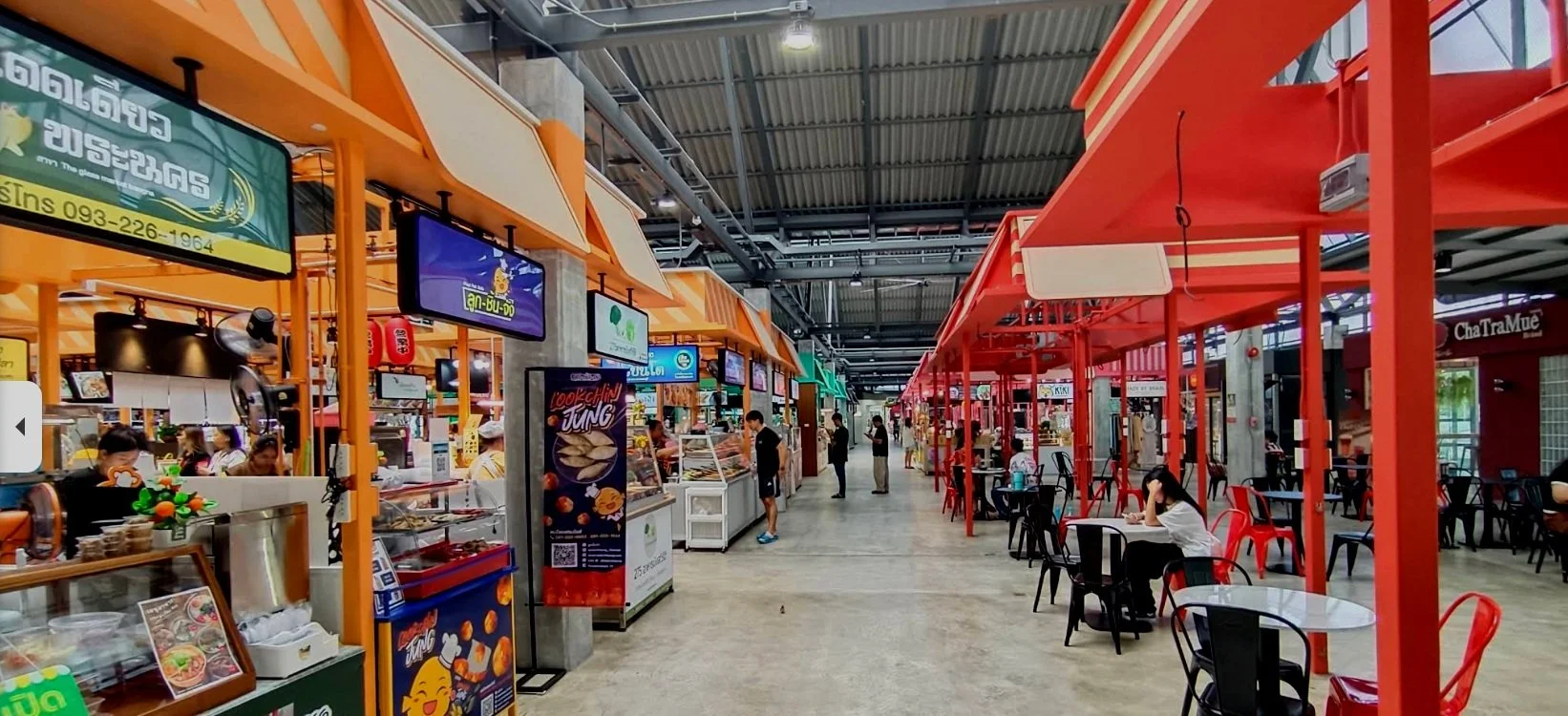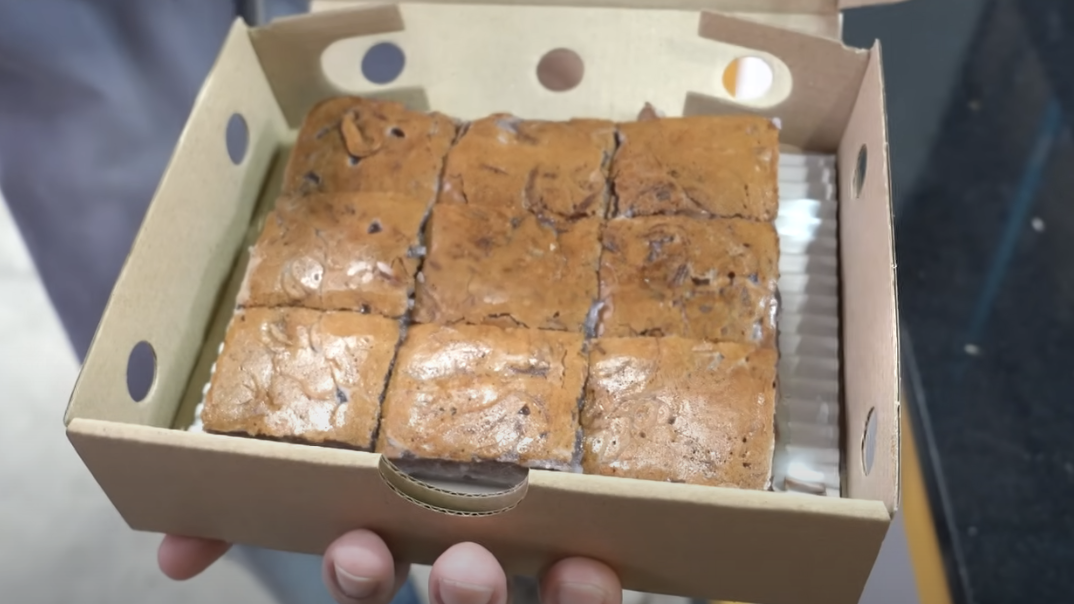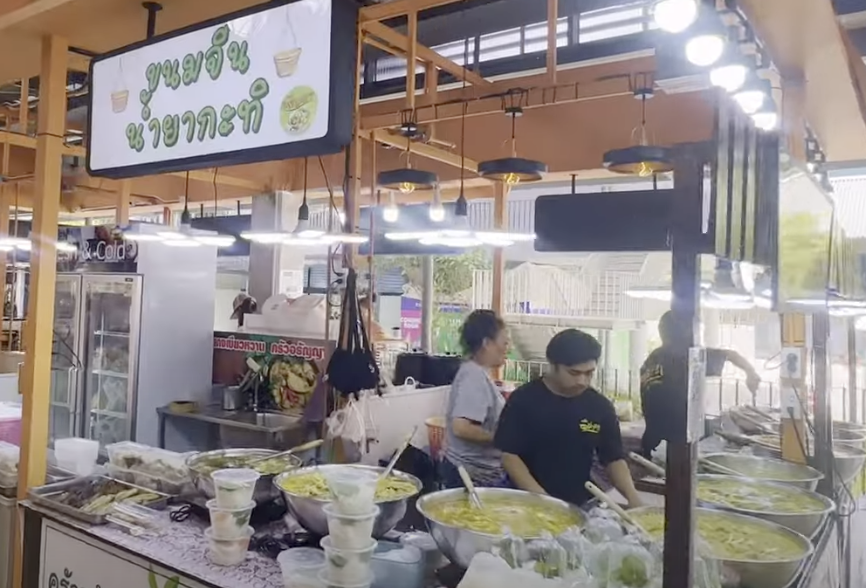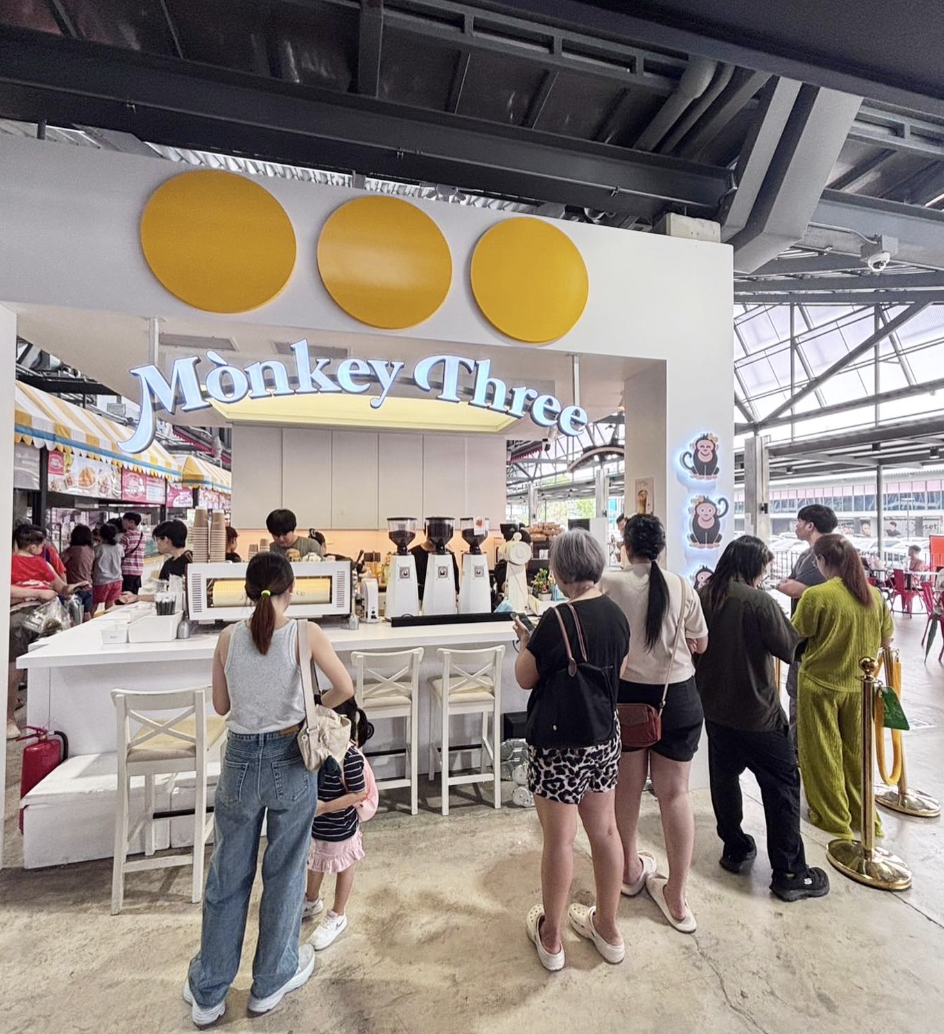
The Glasshouse Bangna
Move over, traditional night markets—Bangkok’s The Glass Market Bangna is here to redefine your evening hangouts! 🌟 Located in the bustling Bangna district, this stylish open-air market blends contemporary design with a vibrant street food and shopping scene.
Think sleek glass structures, ambient lighting, and an effortlessly cool atmosphere that’s perfect for foodies, shoppers, and Instagrammers alike.
Opened in 2025 The Glasshouse Bangna is the newest trendy eatery in Bangkok
The Glasshouse Bangna is adorned with many colorful stall
Location of The Glass Market Bangna and how to get there
The Bangna Glasshouse is located within The Glass Market Bangna, specifically at 52 Moo 8, Bangna Road, Bang Kaeo, Bang Phli. The Glass Market is situated in the Bangna district of Bangkok. It's easily accessible, being close to Mega Bangna and well-connected by roads and public transportation. The location is quite easy to get to via public transport by taking the BTS to Udom Suk then switch to a bus there.
The Glass Market Bangna is situated in Bangna, south east of Bangkok
Travelled to BTS Udom Suk then switch to bus no 365 is your best way. to reach The Glass Market Bangna
Stop #1. Three Monkey
No trip to Thailand is complete without trying the legendary Three Monkeys (3 Monkeys) banana crepe —a crispy, golden street food masterpiece that’s become a national obsession! 🍌 Found at nearly every night market, these addictive crepes feature paper-thin layers fried to perfection, stuffed with caramelized bananas, and drizzled with sweetened condensed milk (or Nutella for the ultimate indulgence). What started as a humble street stall has grown into an iconic brand thanks to its perfect balance of crispy-chewy texture, gooey-sweet filling, and unbeatable 20-40 THB price point. Whether you go classic or opt for chocolate/honey upgrades, that first bite of warm banana bliss explains why locals queue up.
A proud Thai Brand : The Three Monkey
The Three Monkey is popular with the Thais
The Three Monkey's legendary Crepe
The Three Monkey pricing is quite reasonable
Stop #2. ขนมบดิน (Khanom Bodin): A Sweet Legacy of Portuguese Influence
ขนมบดิน (Khanom Bodin) is a delightful Thai dessert with fascinating historical roots tracing back to Portuguese culinary traditions. Introduced to Thailand during the Ayutthaya period (16th–17th century) through Portuguese traders and missionaries, this sweet treat evolved by incorporating local ingredients like coconut milk and jasmine-scented flour. The dessert features soft, chewy layers made from rice or wheat flour, often flavored with pandan or coconut, and is sometimes filled with sweet mung bean paste. Its name, "Bodin," is believed to derive from "pão-de-ló," a Portuguese sponge cake, showcasing the cultural fusion that defines Thai cuisine. Today, Khanom Bodin remains a cherished delicacy, symbolizing Thailand’s rich history of embracing and adapting foreign influences into its vibrant food culture.
The name khanom bodin is assumed to be from the word khanom mo din (ขนมหม้อดิน; lit: clay pot snack) believe that in ancient times it would be cooked in a clay pot.




Stop #3. Radna Rong Lek: Hoi Tod (หอยทอด) – The Crispy Oyster Omelet
No trip to Thailand is complete without trying Hoi Tod (หอยทอด), the iconic crispy oyster omelet that’s a staple of Thai street food. This mouthwatering dish combines fresh oysters with a light, crispy batter made from rice flour and eggs, fried to golden perfection in a sizzling hot pan with plenty of oil. The result is a delicious contrast of textures—crunchy on the outside, soft and savory on the inside—enhanced by a tangy, spicy dipping sauce. Often served with bean sprouts and fresh herbs, Hoi Tod is a flavorful explosion that captures the essence of Thai coastal cuisine. Whether enjoyed at a bustling night market or a humble street-side stall, this dish is a must-try for food lovers exploring Thailand’s vibrant culinary scene!
In Thailand, the fried oyster omelet is known as Hoi Tod (หอยทอด)
Hoi Tod (หอยทอด) is a popular street food, consisting of a crispy pancake made with rice flour batter, eggs, and oysters.
Hoi Tod (หอยทอด) is typically cooked in a large, flat pan with plenty of oil to achieve a crispy texture.
Hoy Tod (เว้งหอยทอด) is not to missed when in The Bangna Glass house
Stop #4. We are Young: Bangkok’s Hip Café with a Sparkling Coffee Experience
Tucked away in Behind the Glasshouse market in Bangna, “We are Young” stands out as a trendy hotspot where coffee meets creativity. This stylish café redefines the coffee experience by serving its signature drink in a **champagne glass**, blending the sophistication of a cocktail lounge with the bold flavors of specialty coffee. Whether it’s a creamy latte, a floral cold brew, or an inventive house creation, each sip feels like a celebration. With its chic industrial décor, laid-back vibe, and Instagram-worthy presentations, *We are Young* has quickly become a favorite among coffee enthusiasts and urban explorers. If you’re looking for a unique caffeine fix with a touch of glamour, this is the place to be.
Once entering the cafe, you are greeted with a huge Narak Dog
We are Young is the up and coming hip cafe in Bangkok
We are Young Cafe serves up great food too
Don't miss the chance to sip coffee in a Champagne glass when here!
Stop #5 Khanom Jeen ขนมจีน
Khanom jeen or fresh rice vermicelli noodles are a common base for curries in Thailand. Each region has their own unique curry that pairs with khanom jeen.
Traditional khanom jeen noodles are made from lightly fermented dough of rice flour and water. The raw dough is pressed into a fine sieve (like spaetzle) and added directly into hot water to cook.
Today, Thai people tend to prefer the non-fermented version due to concerns of over fermentation causing food-borne illnesses. Khanom jeen is sold at room temperature and does have a short shelf life so this concern is totally valid. Personally, I prefer the fermented version for its unique tanginess that pairs well with rich and salty curries.
Fresh khanom jeen noodles are super difficult to find in the states and we usually use dried rice noodles as a substitute. It’s also known as rice stick noodles, bún (in Vietnamese), and jiangxi (in Mandarin). These are not to be confused with vermicelli noodles made from mung bean or potato starch; these should be made from 100% rice flour.

![Khanom jeen (Thai: ขนมจีน, pronounced [kʰā.nǒm tɕīːn]; Northeastern Thai: ข้าวปุ้น, pronounced [kʰà(ː)w pûn]; Northern Thai: ขนมเส้น, pronounced [kʰā.nǒm se᷇n]) are fresh, thin white rice noodles in Thai cuisine](https://images.squarespace-cdn.com/content/v1/6838258526846f4b665d5739/3f8bc20e-57c1-4f0f-9721-aa97e7b7c5b2/Screenshot+2025-06-27+at+3.48.37%E2%80%AFPM.png)



















